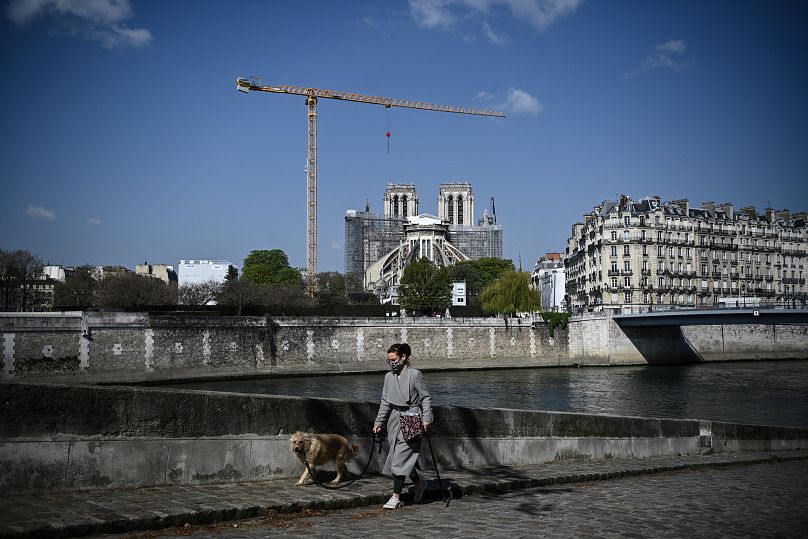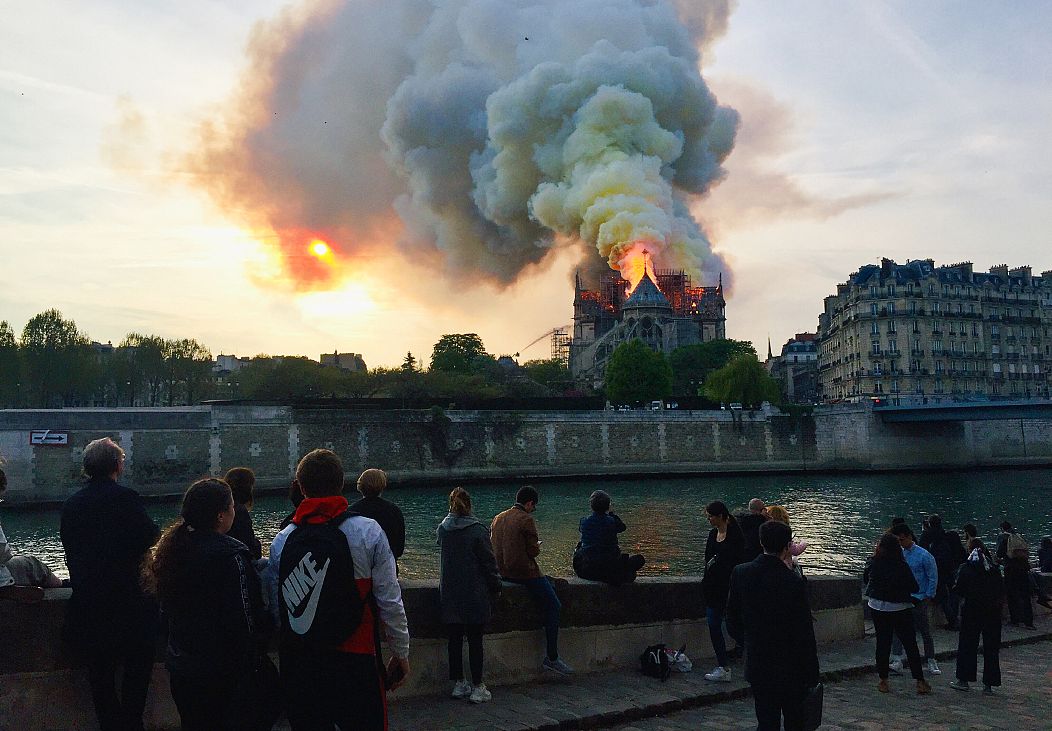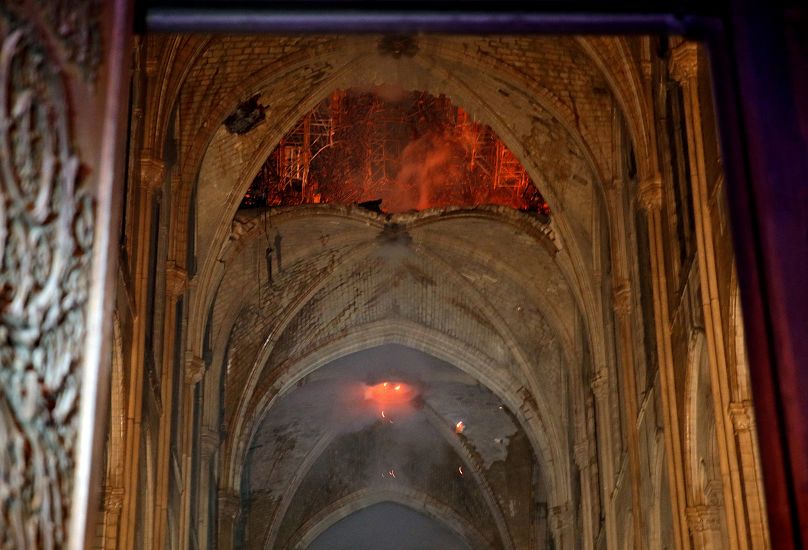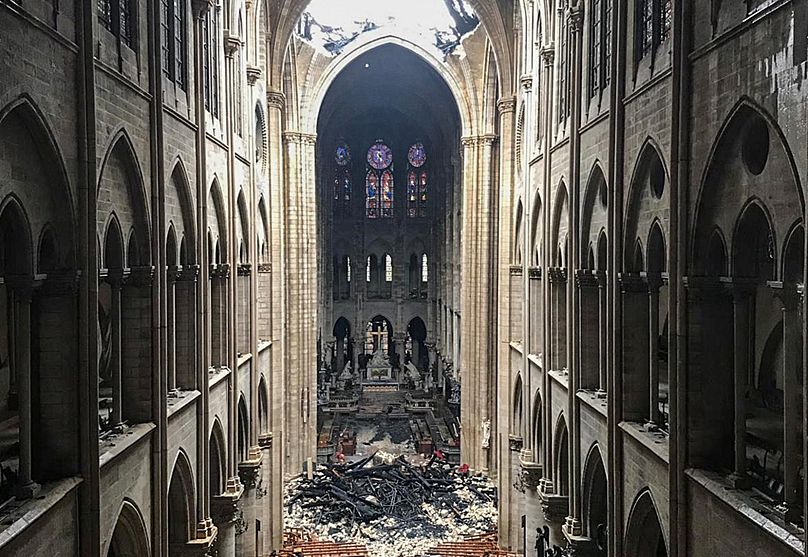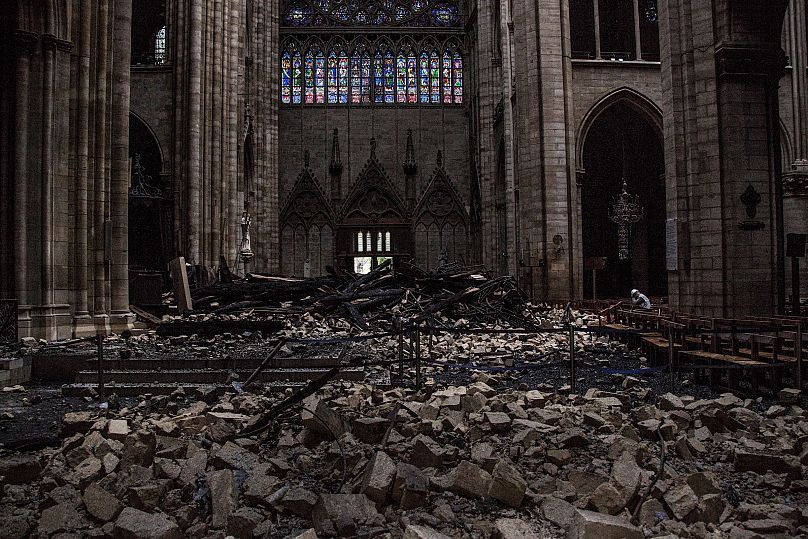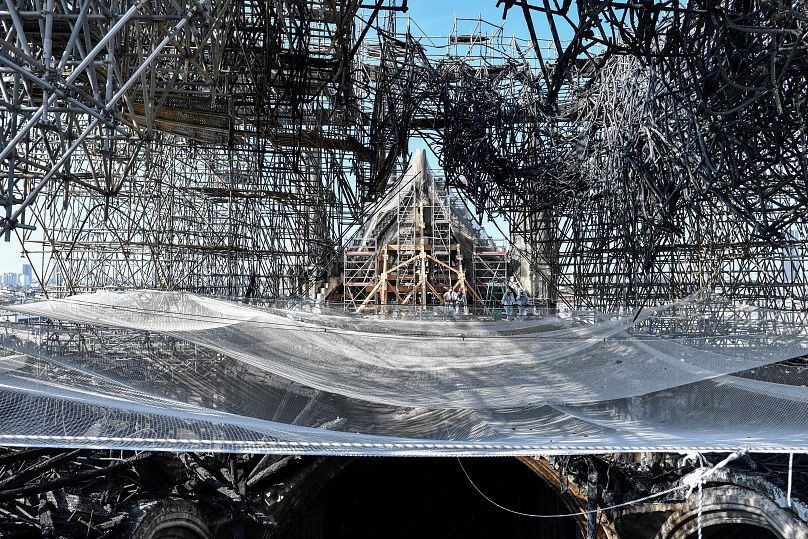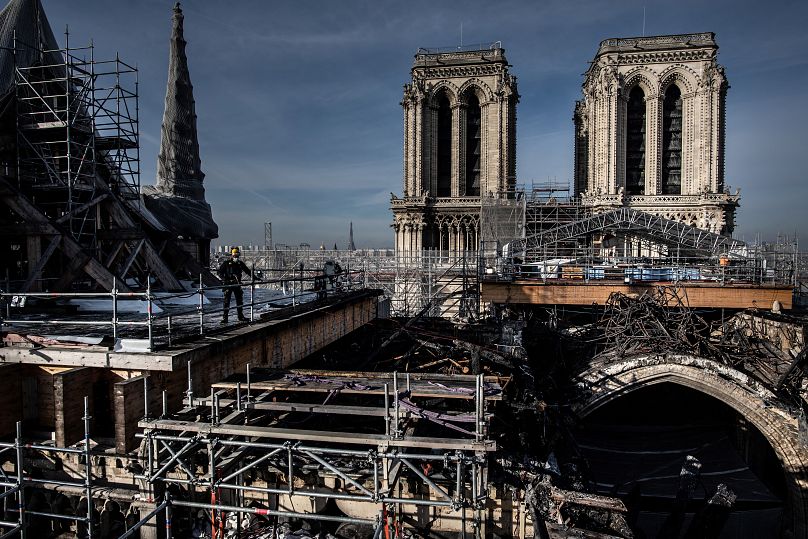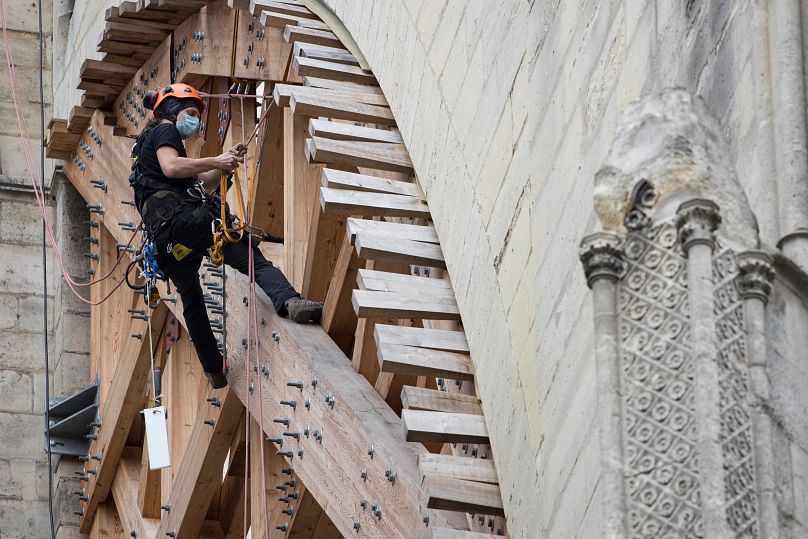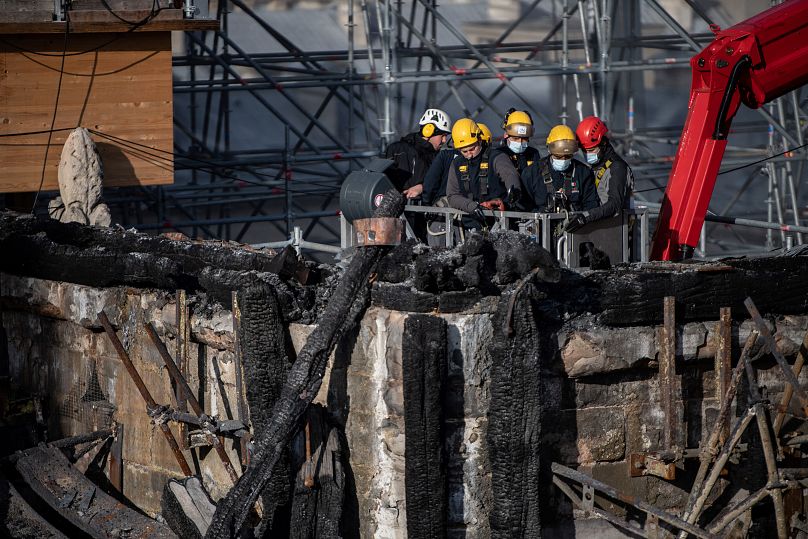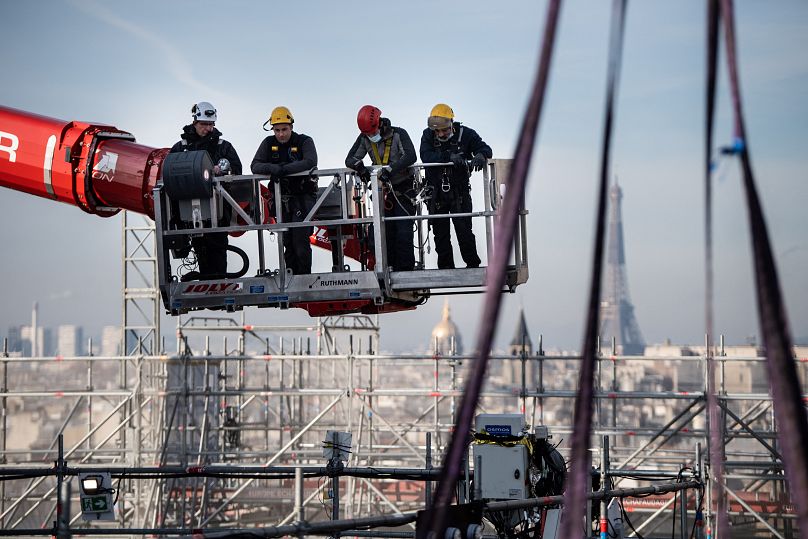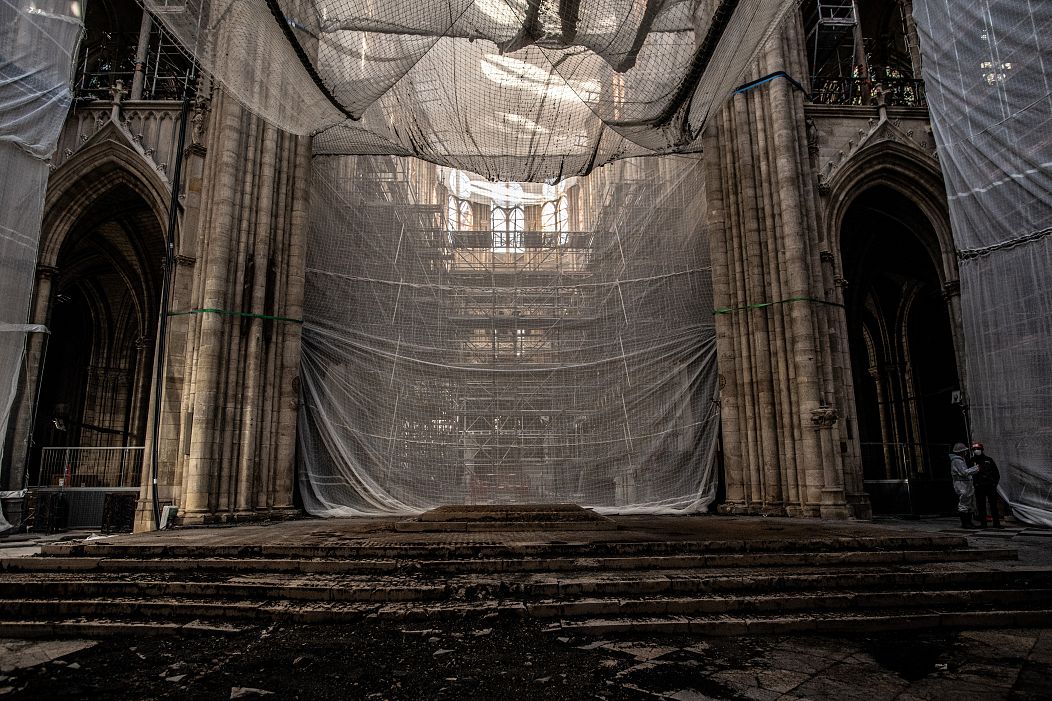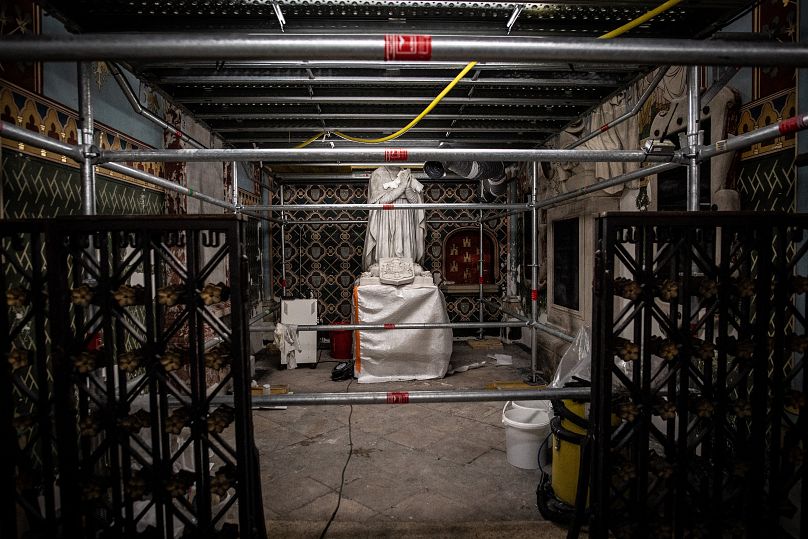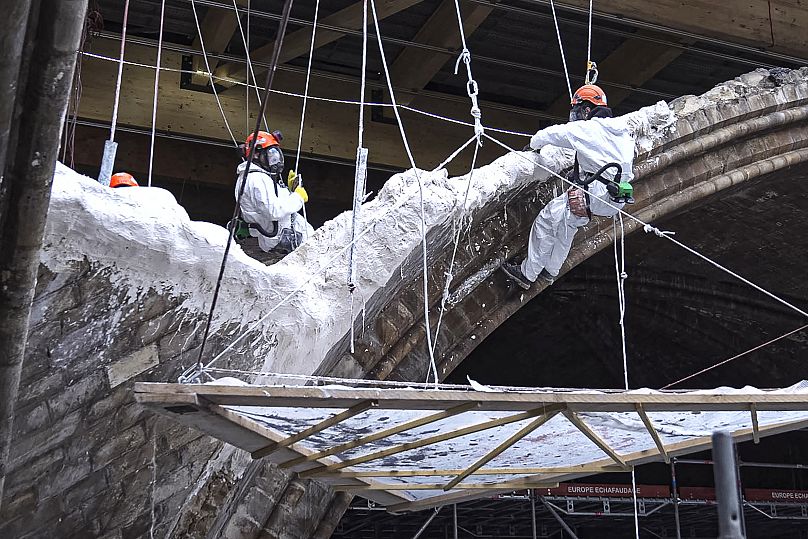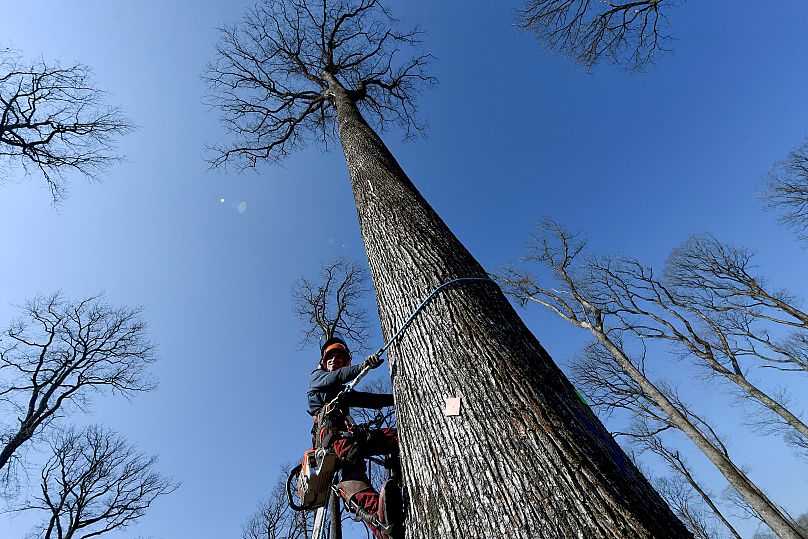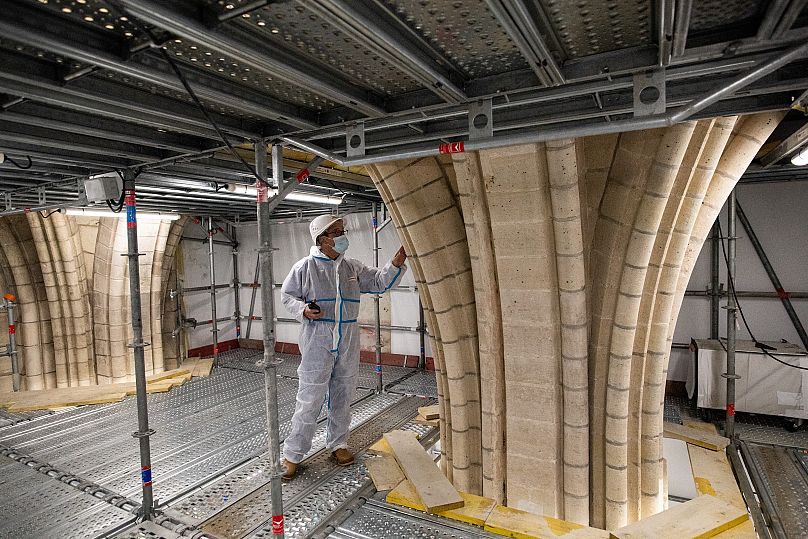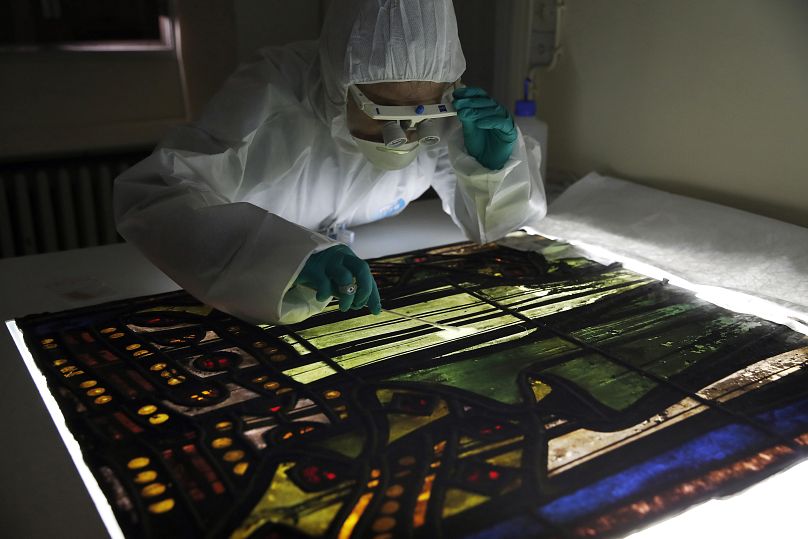Two years of work to restore Paris' Notre Dame Cathedral | In pictures
Two years on from a devastating blaze, much work has been done to restore Notre Dame Cathedral in Paris to its former glory. But much more is still needed.
Notre-Dame Cathedral, one of the most iconic landmarks of the French capital, looks peaceful today: the new scaffolding and building cranes that surround it give Parisians and millions around the world cause to celebrate the renewal of the more than 850-year-old monument.
The picture of the Cathedral on this chilly spring day is in big contrast to the heartbreaking picture the landmark made two years ago. On the evening of April 15, 2019, its roof and iconic spire were consumed by fire, shocking Parisians and the world, as the incredible efforts of the French firefighters were broadcast live around the globe.
France held its breath while the damage was assessed and donations poured in. The authorities promised the imminent restoration and gave emotional speeches to support the nation in mourning of its iconic landmark.
It was clear then that the way ahead would be long, and the dangerous and meticulous work carried out on site, in laboratories and even forests around the country provide a fuller picture.
Browse through this selection of photographs to see what has so far been achieved in the enormous efforts to rebuild the beloved monument over the past two years.
To start the restoration process, work had to be done to clean and secure the site. One of the main consequences of the fire was the loss in structural stability due to the collapse of its roof. The limestone absorbed water used in extinguishing the fire, while some of the stonework has been damaged by the flames.
One of the biggest challenges was to resolve the problem of the scaffolding that had been installed to restore the building's spire, and was damaged during the blaze. It was successfully removed a year later.
New scaffolding was constructed simultaneously to access the parts of the cathedral that needed to be dismantled or repaired.
Much work has had to be done to ensure that other parts of the building do not collapse, including removing the statues that were taken down from the north, south and west gables.
Robots have helped technicians clean the rubble inside Notre-Dame due to the risk of further collapse. All the remaining debris - mainly wood, metal, stone and gravel - was carefully checked and marked by experts before it was removed from site.
Teams worked to remove the debris from the top of the cathedrals vaulted ceiling. This includes charred remains of the wooden frame and lead from the roof which melted during the fire.
The cathedral was reinforced and supported with wooden decking between the gutter walls. Twenty-eight temporary wooden bracings were built under Notre-Dame's iconic flying buttresses, which are a form of structural support that is common in Gothic architecture.
The first of about 1,000 oak trees chosen to reconstruct the destroyed Notre Dame's spire were felled in the Forest of Bercé in the Loire region. These century-old trees will have to be left to dry for up to 1,5 years before they can be used for this important mission.
All of the remains removed from the top of the cathedral's vaulted ceiling as well as from different parts of the building were sorted in large tents at the foot of Notre Dame. Meanwhile, scientists in laboratories are using the recovered objects as key clues to find the best and safest way to restore the interior of the monument This work is scheduled to start by the end of 2021.











